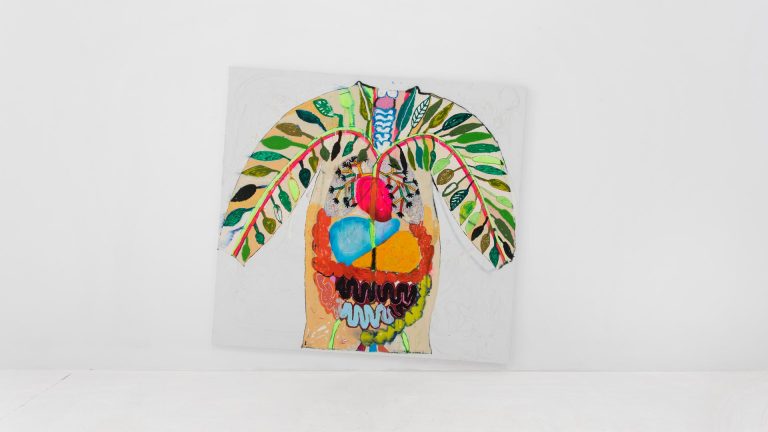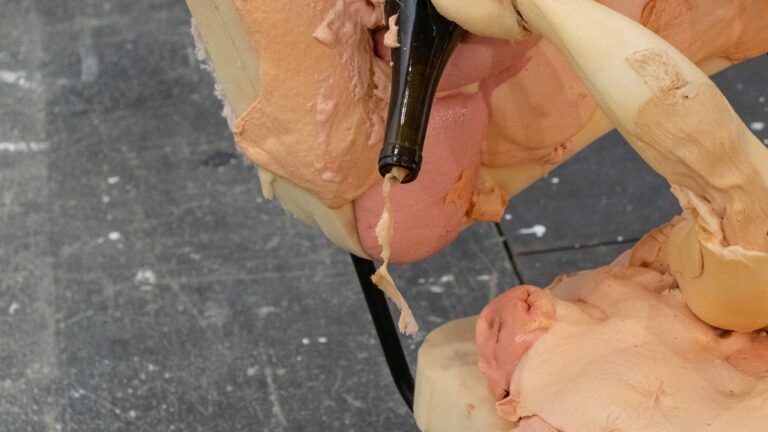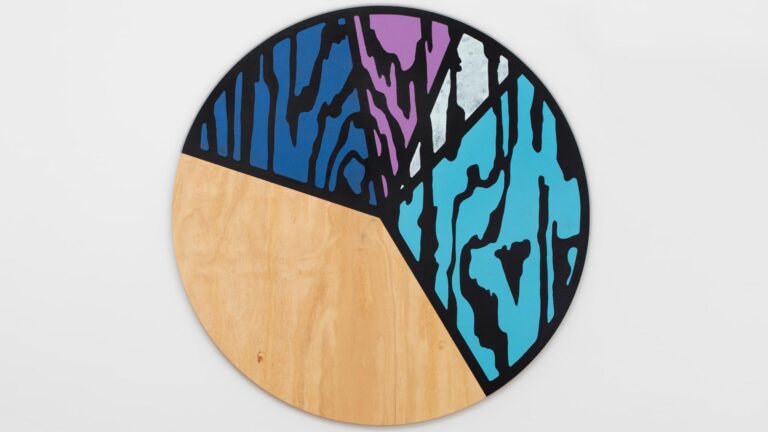Artist: Antonio Fernández Alvira
Exhibition title: Partir de una potencia formal para palpitar como cuerpo
Venue: House of Chappaz, Barcelona, Spain
Date: May 6 – June 24, 2022
Photography: all images copyright and courtesy of the artist and House of Chappaz, Valencia/Barcelona
Antonio Fernández Alvira confronts us with the process of regularization and standardization to which our gaze – and as a consequence, our understanding of our environment – has been constantly subjected. It questions this process of standardization that also acts on our ways of doing things, in which all those cultural references built and fixed by modern institutions, such as the museum or the academy, resonate strongly.
The museum, this space where to exhibit sets of objects and information that reflect some aspect of human existence has existed in the West since antiquity. In Greek temples, objects of worship or offerings were kept and occasionally displayed to the public so that the public could see and admire them. Hence we can understand that the museum, historically, has sought to make accessible the collective heritage and knowledge of the Nation -if we are situated from our modernity- as well as consolidating the ideal of beauty through a selection of objects and ideas.
As obvious as it is, all of this is still problematic. It is important to understand and make visible that this “making accessible” is not neutral. The museum generates national and cultural narratives and visuals, reinforces a canon – that set by a series of rules – a history that assumes its role of later cultural reference in an almost inescapable way. German art historian Aby Warburg has already set out to analyze the weight of this visual and formal frame of reference that shapes our relationship with the sentient world, history, and images. Opening the exhibition with a reduced version of the project Elements for a speech (2018), Antonio Fernández Alvira forces us to transfer it.
In this exercise, there is a desire to get rid of this legacy, becoming increasingly interested in the formal components of his sculptural proposal from an approach that tends to the corporeal, in a more procedural and situated way. body, form, process This new project, Flowing in the Fixed (2021), seeks to dilute the canon into a concrete bodily experience. It starts from the collection and accumulation of architectural ornamental elements found on the street and which no longer fulfill their original function – elements that have become demolished or ruined – and then reassembled. These fragments, in their old disposition, formed the skin of the architecture from which we read the spaces. Through a gesture of spatial and functional displacement they are waiting to be re-signified.
Once collected and reassembled following a visceral, intuitive logic, Antonio Fernández Alvira makes a clay record of these elements. This record is then ripped off and taken to the body – to your body. In this start, the strappo technique reverberates, a technique that consists of separating the pictorial surface from a decorated wall to place it on a new support, making it lose its original appearance in terms of color, but also in texture and shape. . The mud register is modeled, handled with its weight and its movement until it is a piece of greater organicity, generating new gaps and corners that connect the corporeal with the architectural, putting these two different scales in relation. By making a mold, a series of pieces of pigmented plaster are obtained, a humble material which, through a polishing process, gives a stony, marble finish, similar to that of stucco. The pieces obtained after this process are fixed and arranged in a more organic way to everything that the artist had presented so far. I allow myself such a detailed description of the process without fear of revealing the possible visual deception that lies in this proposal, since, in my opinion, this time Antonio’s game is not going in that direction.
Architecture, space, perception
After losing their shape, these fragments confront us with a new spatial reading where the body and its displacement are the basis of our relationship with architecture. The body acts as an element of connection with space, which is revealed as the main concern of the artist. Color acts as an indispensable element when contextualizing the proposal, where the space of the gallery becomes part of the piece: it is the frame of reference where the dialogue that takes place between the different elements that make up the exhibition, the gallery space and the body of the visitors. I’m not talking about scenery, I’m talking about something more delicate, what determines and conditions a situation of interrelation. We observe how some pieces are arranged in pairs, in dialogue, highlighting the space that is generated between two bodies and acting as a boundary.
The focus shifts here from the object to the cracks or fissures that the artist has been drawing through the arrangement of the pieces, as a punctuation. For this exhibition, Antonio Fernández Alvira proposes one
-Elena Blesa


























































